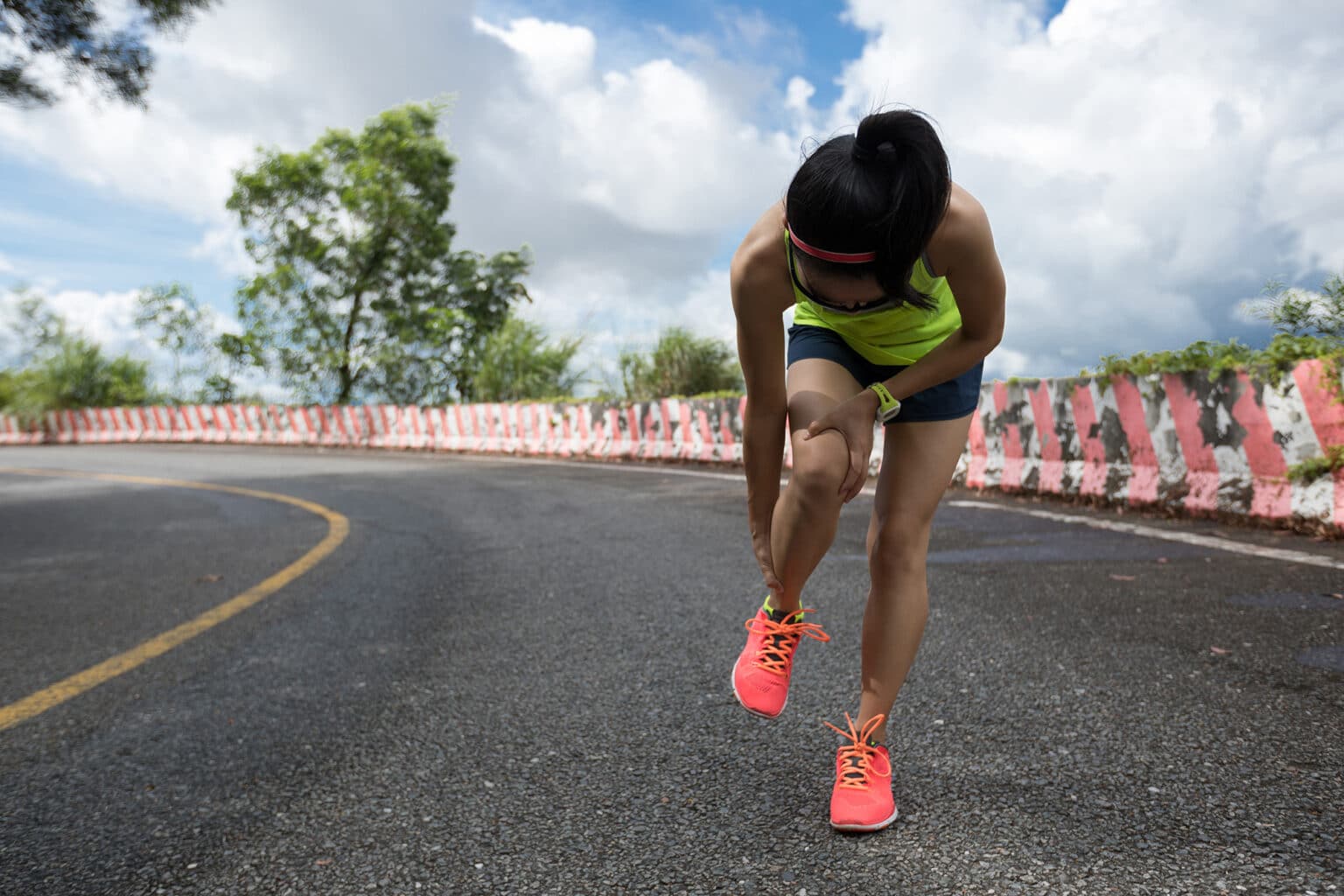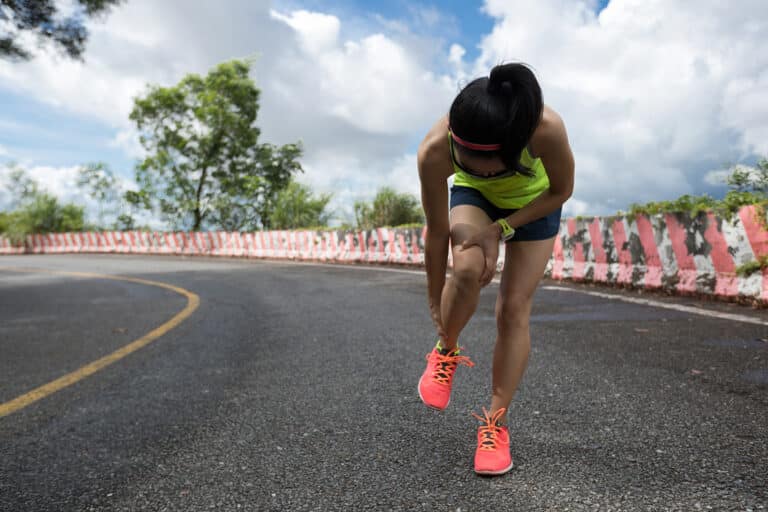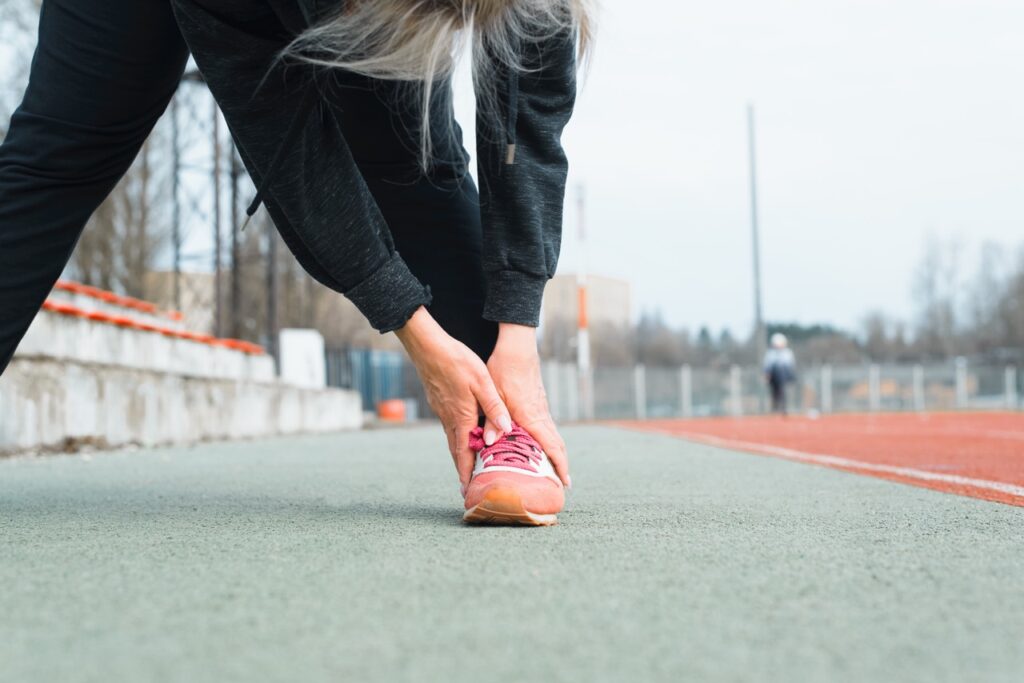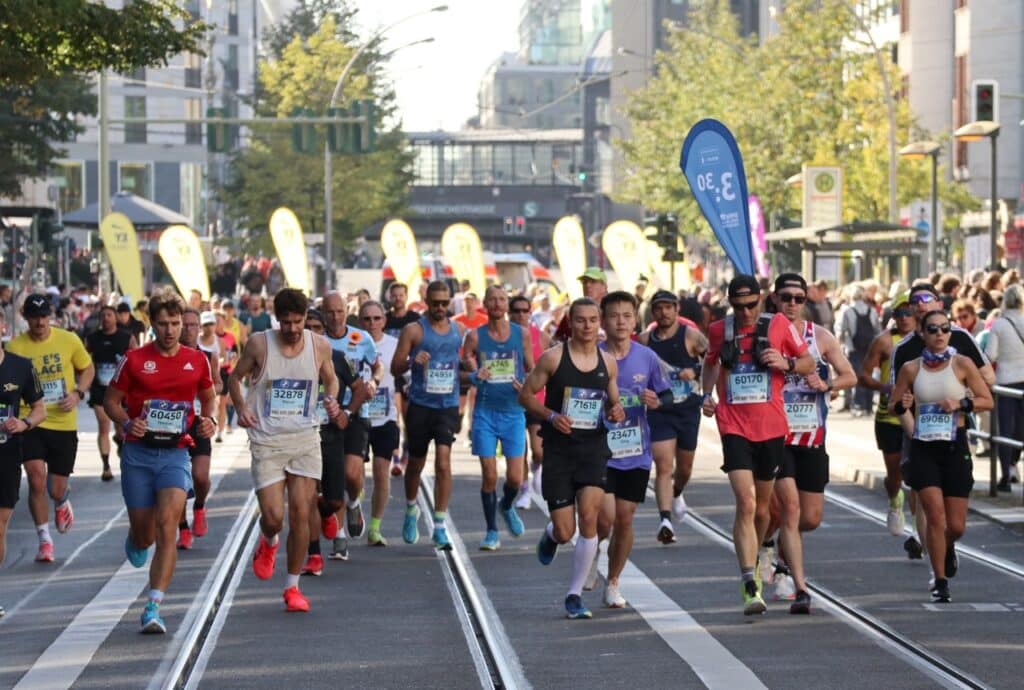


An Achilles Tendinopathy or Tendonitis is a structural change to the tendon that attaches the calf muscle to the heel bone, anatomically known as the calcaneus.
It is deemed a tendinopathy, when the tendon itself becomes inflamed. The Achilles Tendon can absorb up to 6-8 times bodyweight whilst running and affects around 9% of recreational runners.
Here are the first signs of Achilles Tendonitis from running:

Tendons are known to undergo a process of wear and repair from daily activities. The importance of rest means that whilst these tendons may sustain an element of structural change, they have the ability to repair, similar to that of a muscle.
When running to a high frequency and intensity without the required recovery, the repair process is somewhat limited, and we experience overload; often, this will lead to pain and/or dysfunction.
Risk factors will include poor lower limb strength, poor ankle mobility and altered foot and ankle mechanics. Footwear has always been a hot topic in the running community and trainer selection can certainly contribute, particularly when changing to an aggressive profile.
Lastly, we must consider an appropriate training plan. Often, Achilles Tendinopathies are present in those training to high volume, high intensity and low levels of participation in strength and conditioning.

A multi-factorial approach to treating Achilles Tendinopathies is often the most effective, particularly in runners. Often I will encourage the following considerations….
For those looking to encourage a quicker recovery, I would always discuss further treatment options with tendinopathy clients.
These can include…
Extracorporeal Shockwave Therapy – a non-invasive tendon-focused treatment which encourages the bodies natural healing process to support reductions in pain and improve tissue healing
Platelet Rich Plasma Injections – for those stubborn tendons that are just not settling! A Sport and Exercise Medicine Consultant can discuss the options of PRP injections. Very simply put, this is where a consultant will inject the richest content of your own blood into the injured tendon.
Physiotherapy is often seen as the ‘go-to’ when an injury occurs, but actually seeking a sports physiotherapist prior to injury can really help prevent complaints such as Achilles Tendinopathy.
How to prevent an Achilles Tendinopathy:
Jack has created a series of exercises designed to help runners build strength and core stability. These exercises include single-leg drops, hopping, heel raises, and goblet squats. These movements can effectively strengthen the calves and the Achilles tendons.
Achilles Tendinitis from running is a common but manageable condition. Remember, it’s not just about clocking miles but also about maintaining the balance between training and recovery, strength and flexibility, and speed and endurance. It is crucial to listen to your body’s signals and respond appropriately to ensure a successful, pain-free running journey.
To book your physiotherapy appointment with Jack, click here
Join our mailing list to stay up to date with the latest UK running events, training tips, and exclusive offers on running products. Rest assured, we value your privacy and would never dream of selling your address. Sign up now…
Share this article
“The hip bone is connected to the Thigh Bone”, as to quote a line from...
Running is a popular form of exercise that helps to improve cardiovascular health, strengthen muscles...
Are you a runner looking for a way to improve your performance, reduce the risk...
Running undoubtedly stands as a fantastic approach to achieving your fitness goals. It draws millions...
Running is an excellent form of exercise that can benefit your cardiovascular health, strengthen your...
London Winner, Mike Gratton on Tapering for a Marathon The training is done, the last...
We’re here to make sure you’re up-to-date with the latest running tips, events and product discounts – we’ve always got your back! Rest assured, we value your privacy and would never dream of selling your address.
BONUS: Sign up today and receive a FREE code for our Sub-4-Hour Marathon Plan